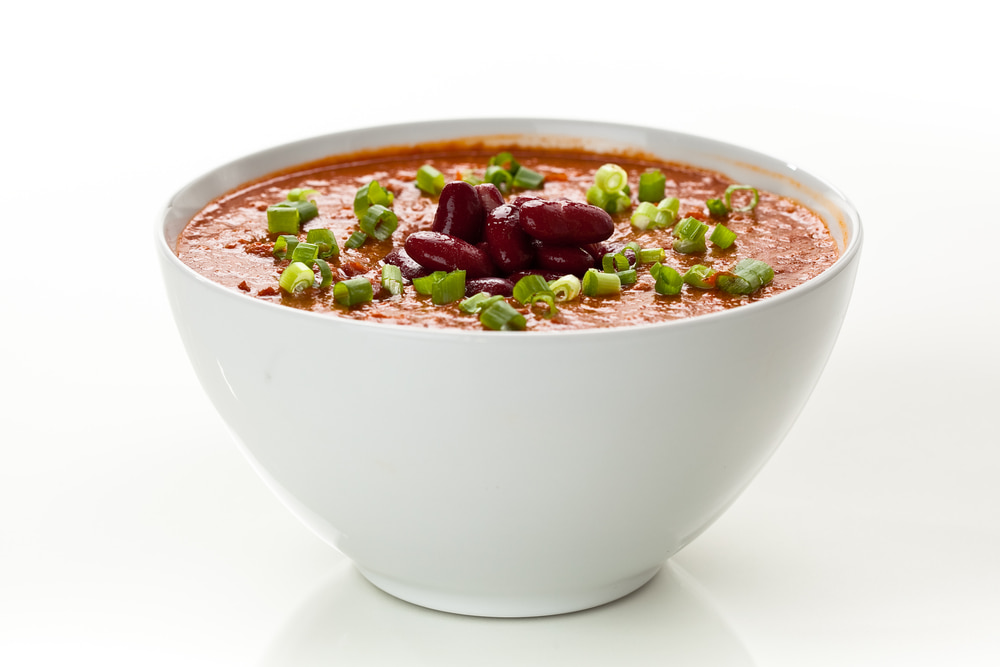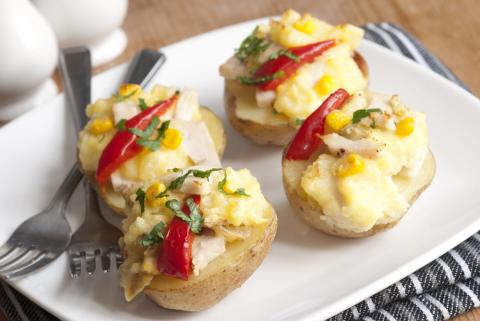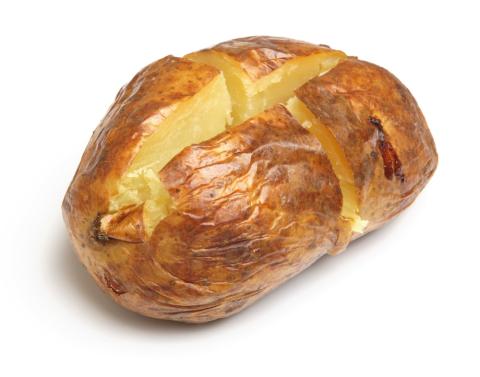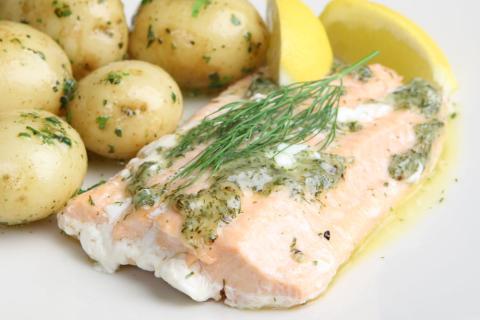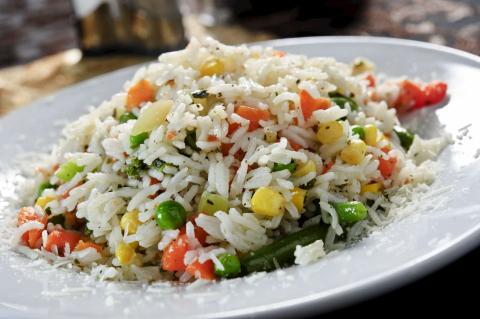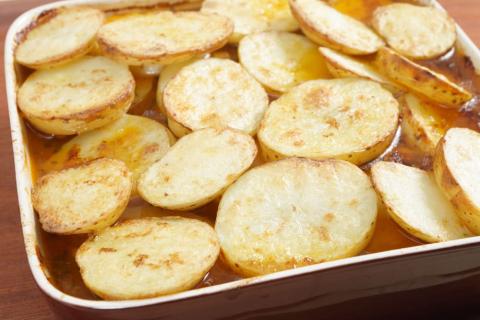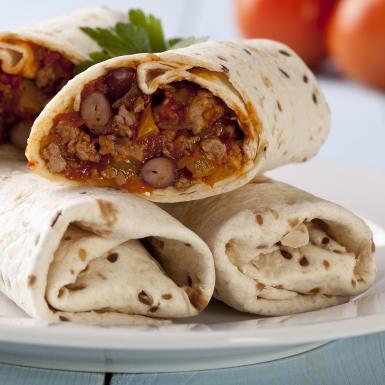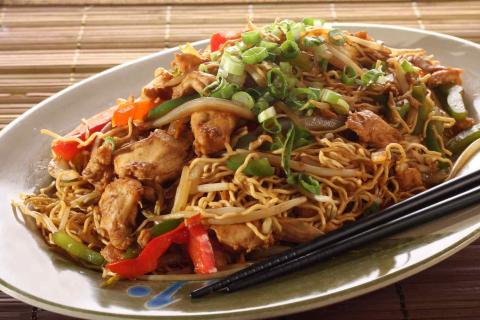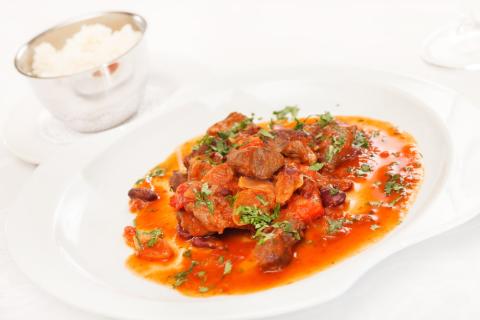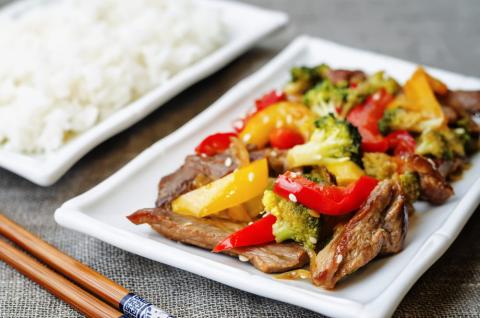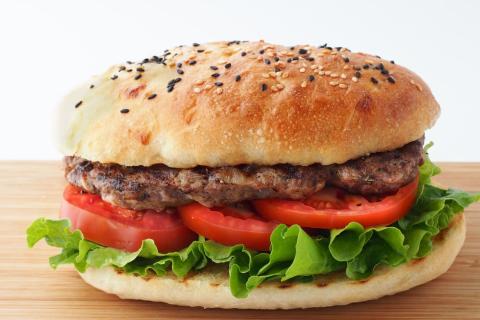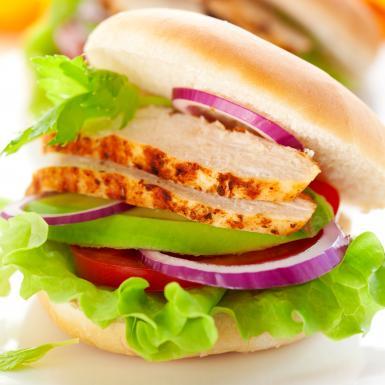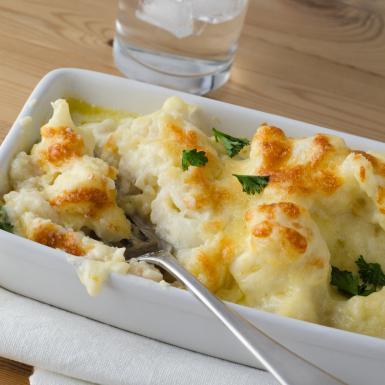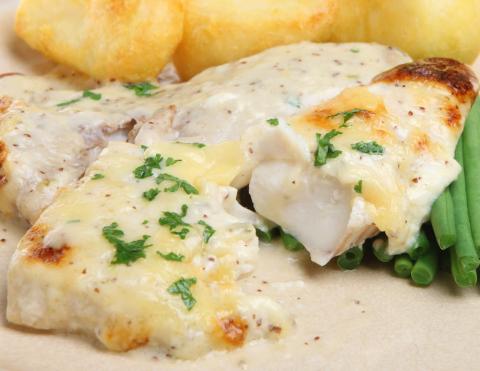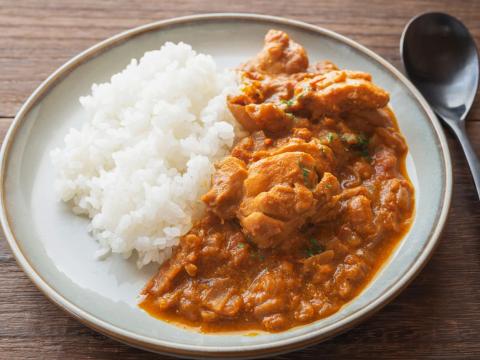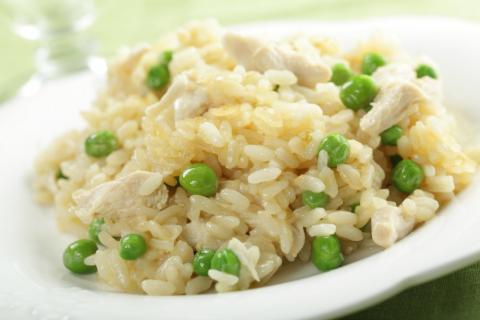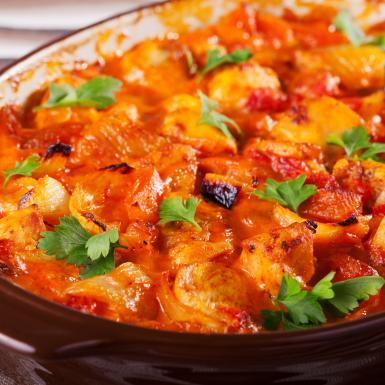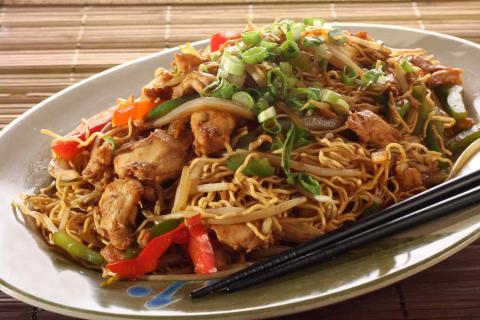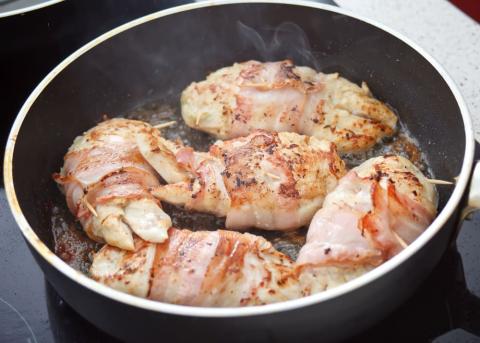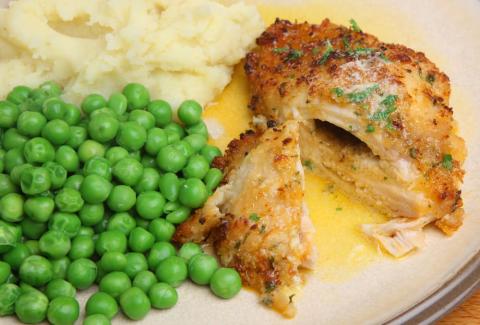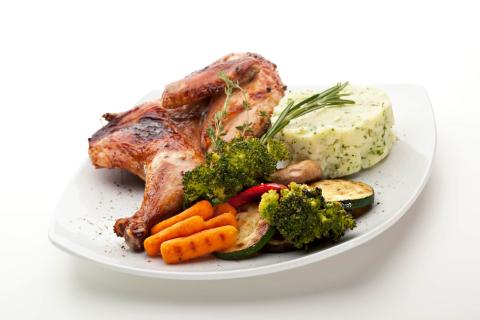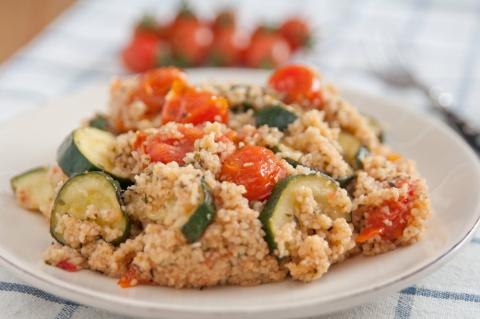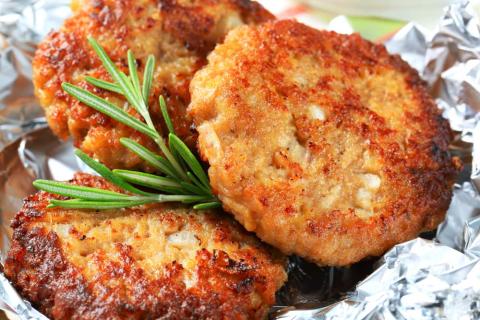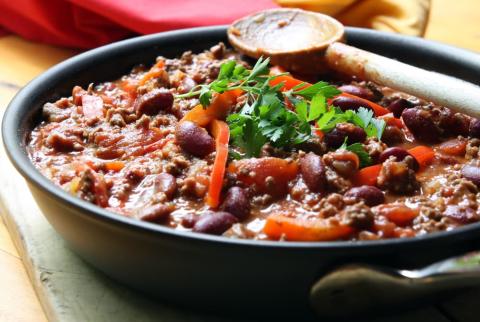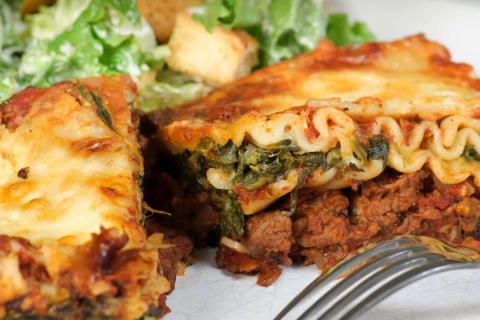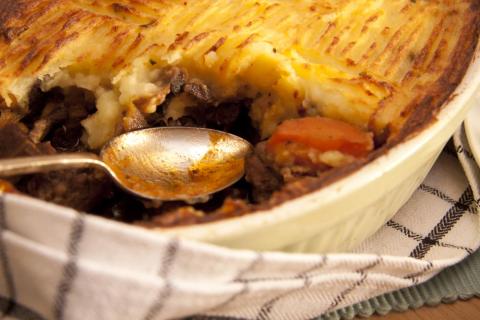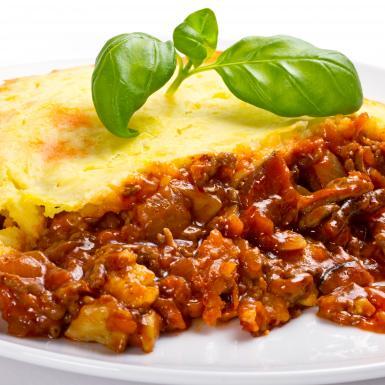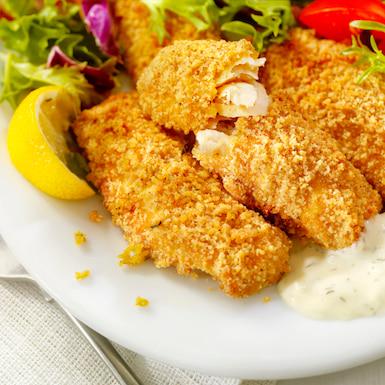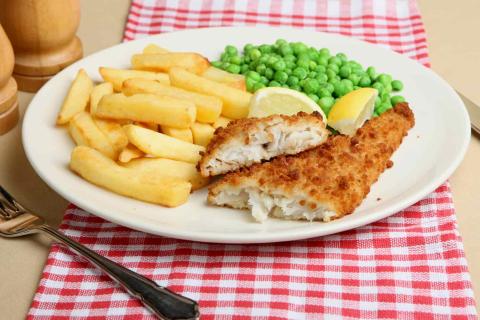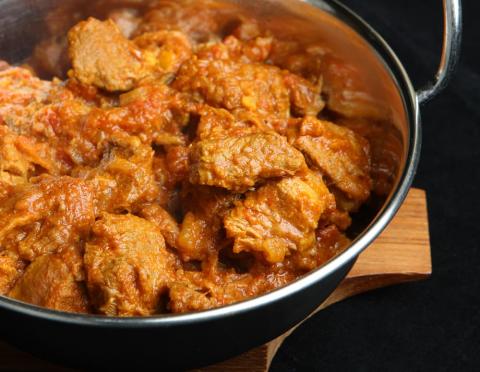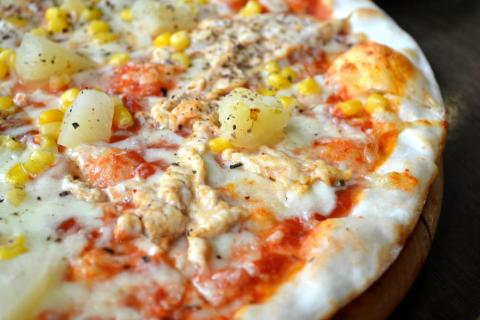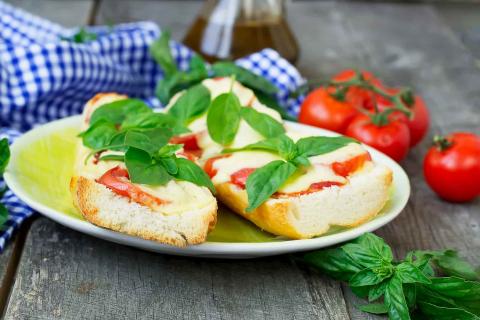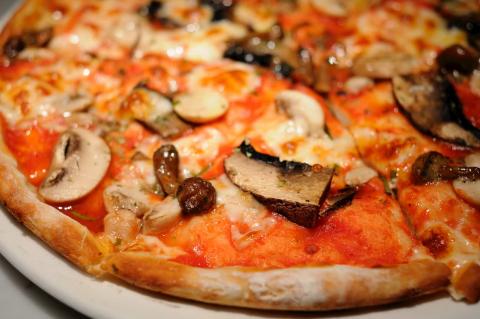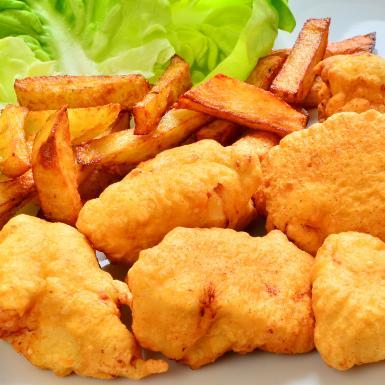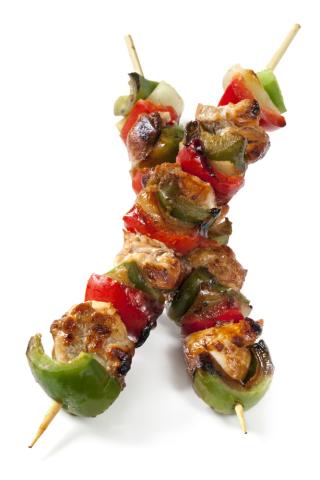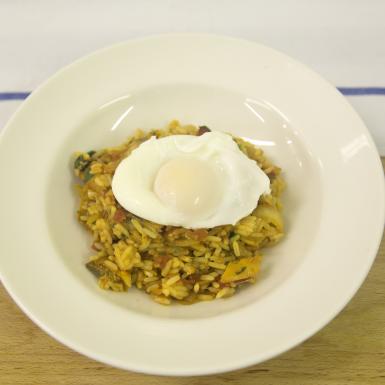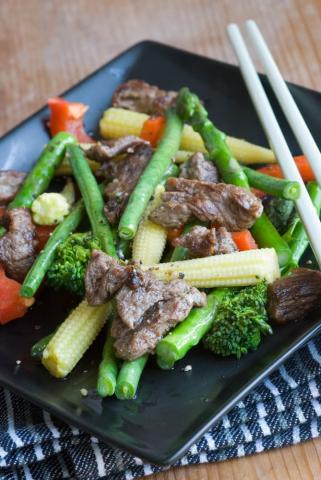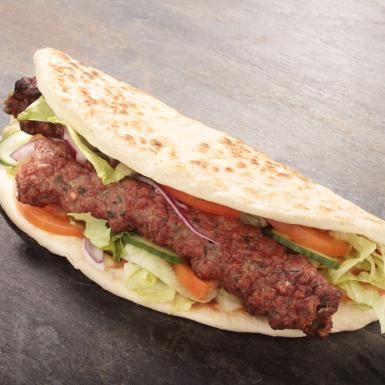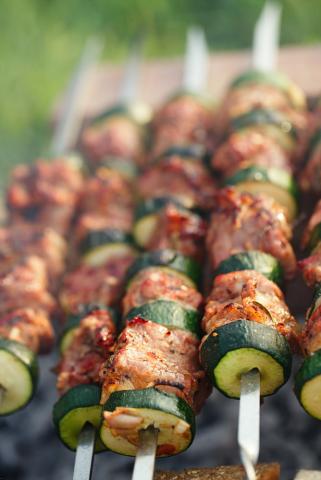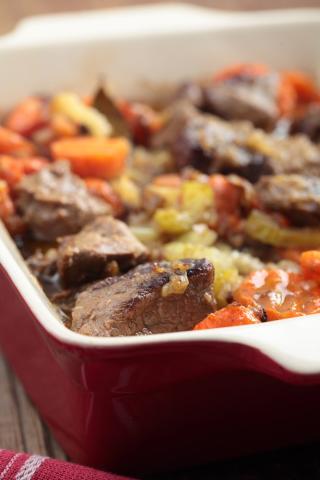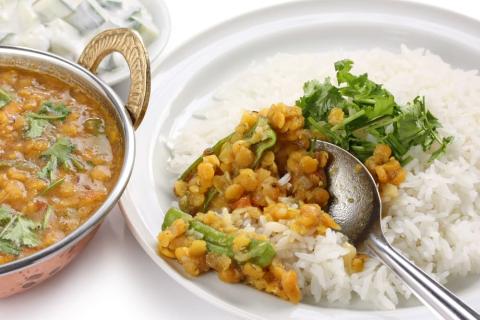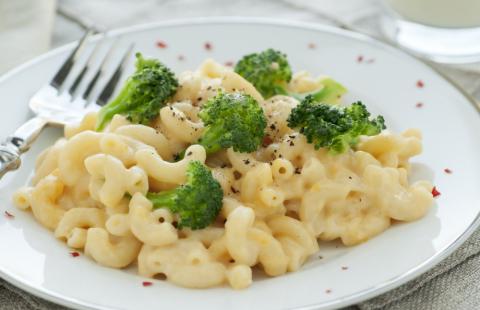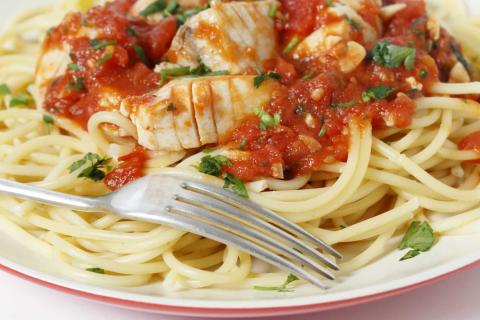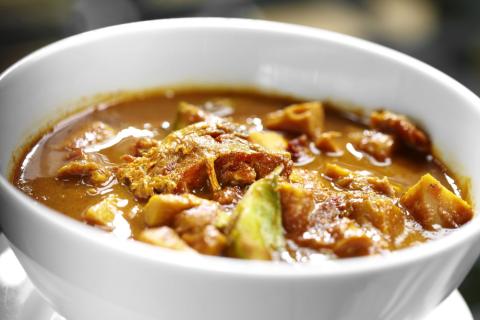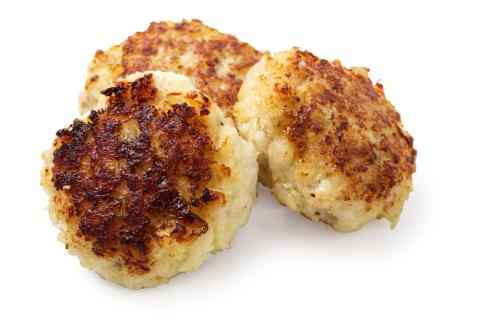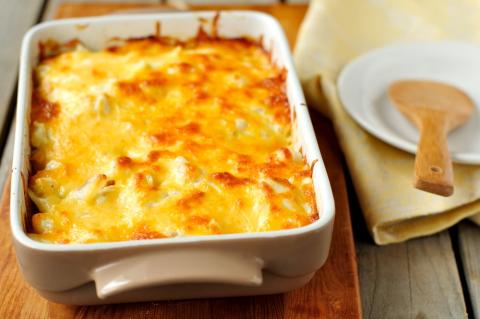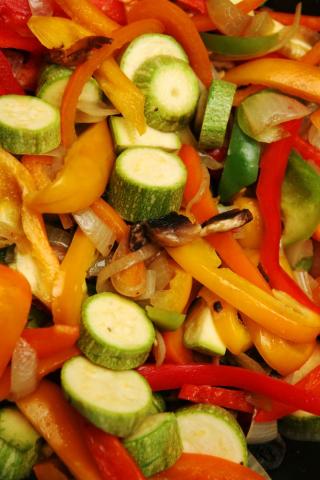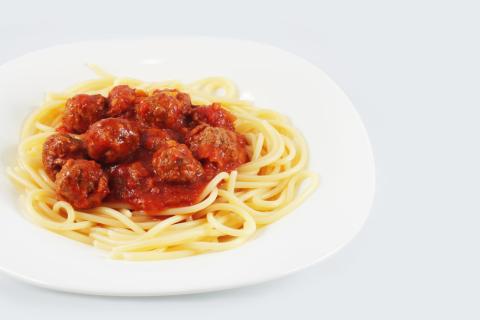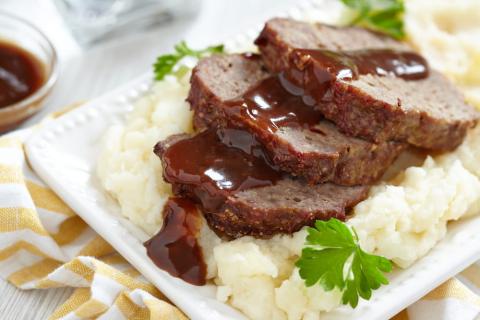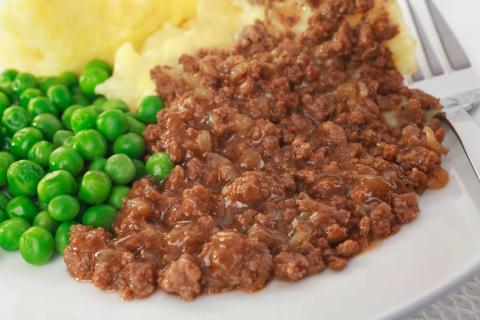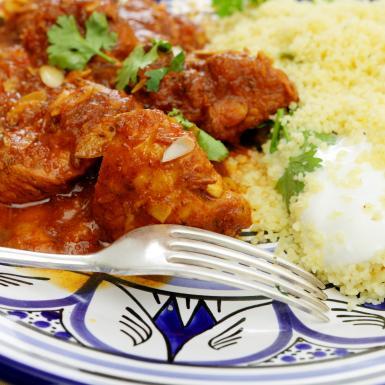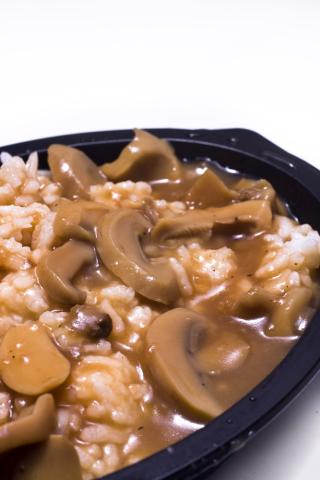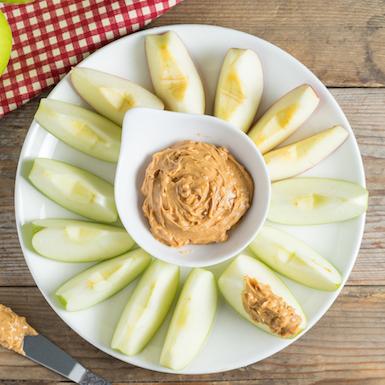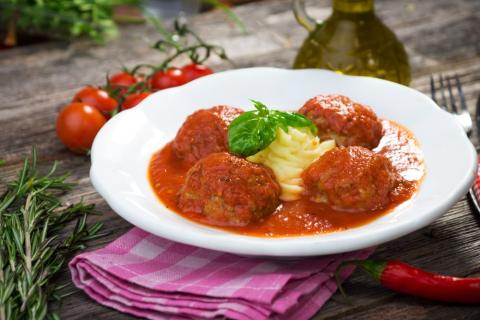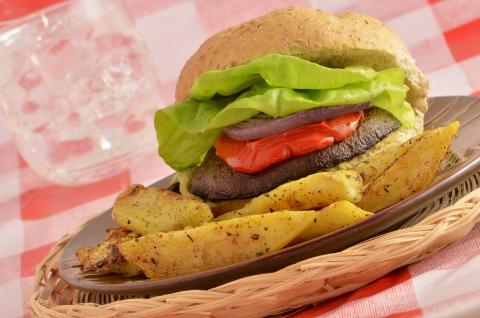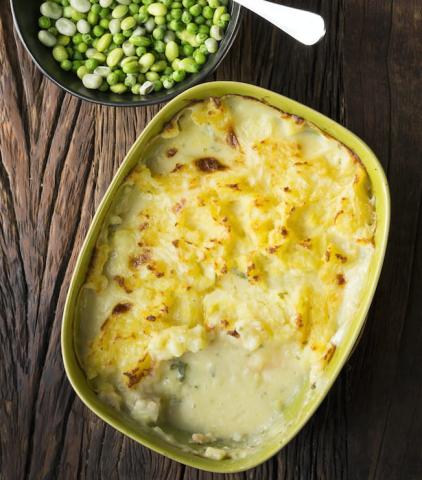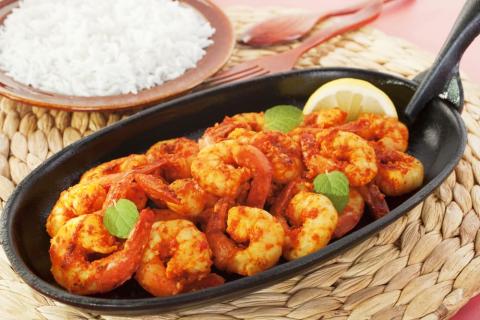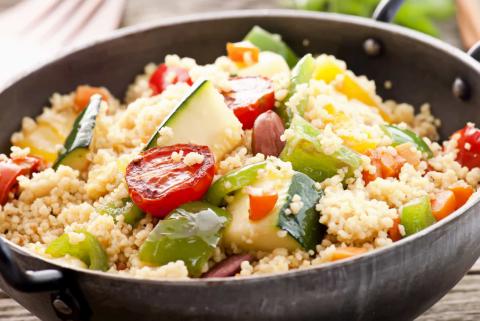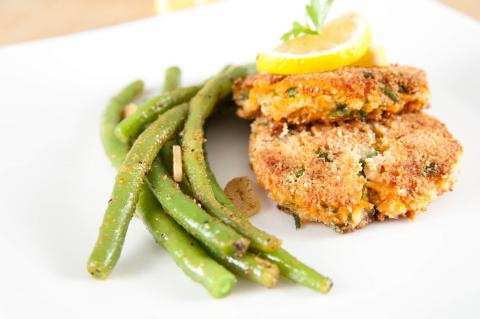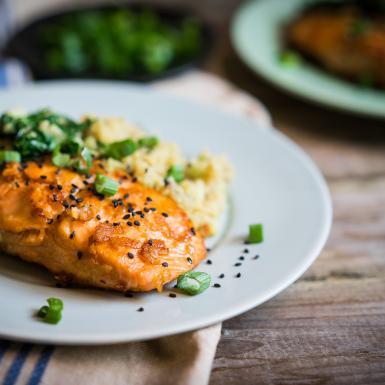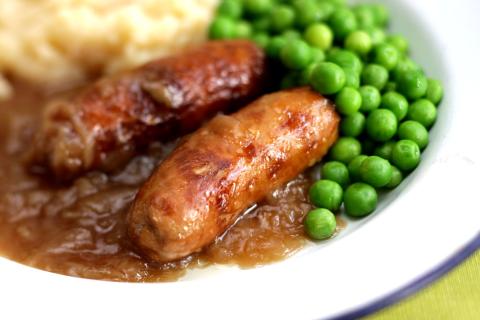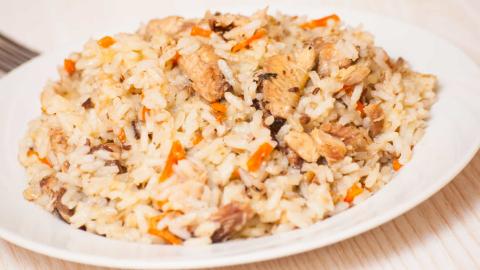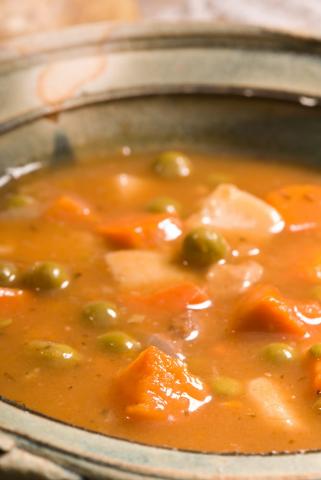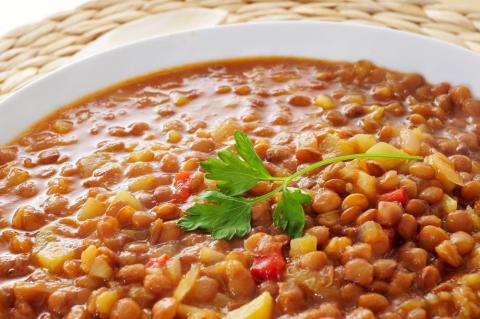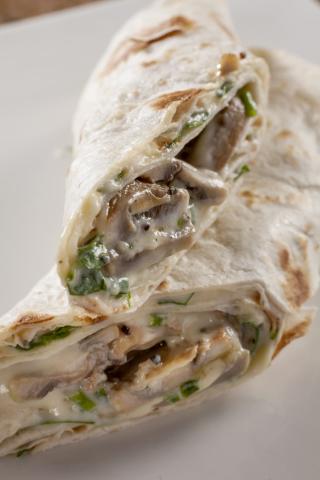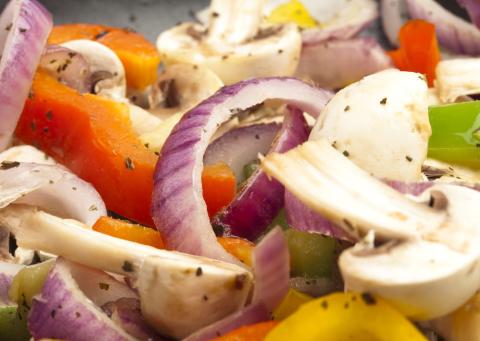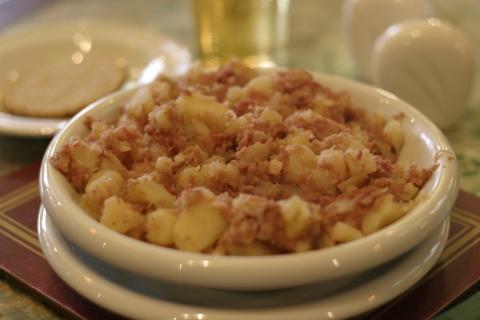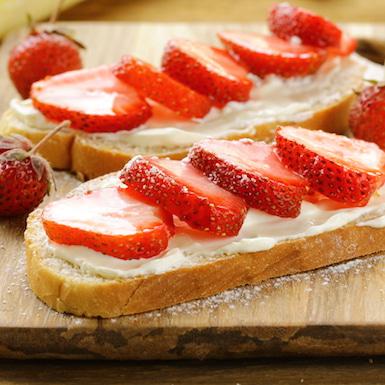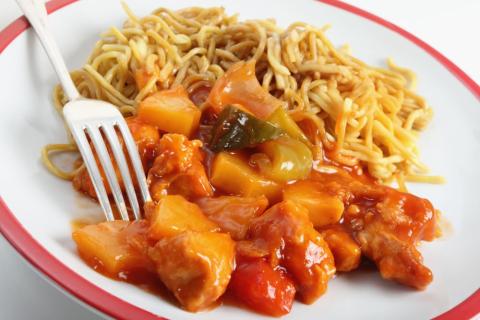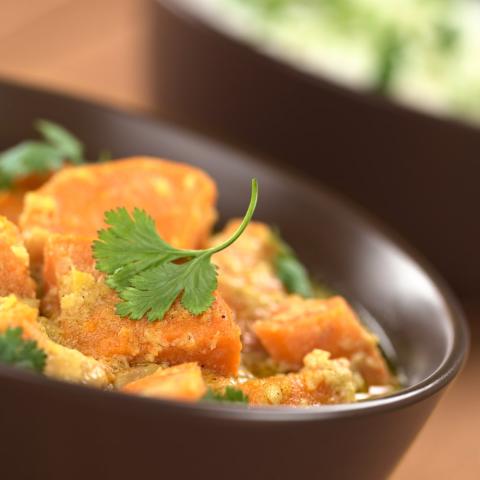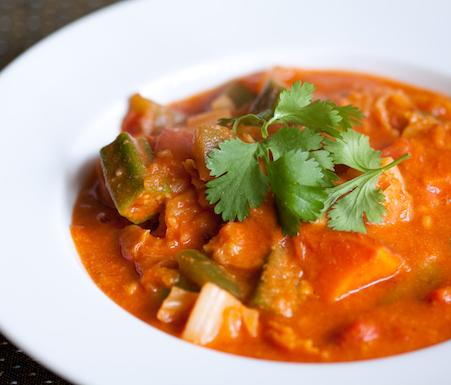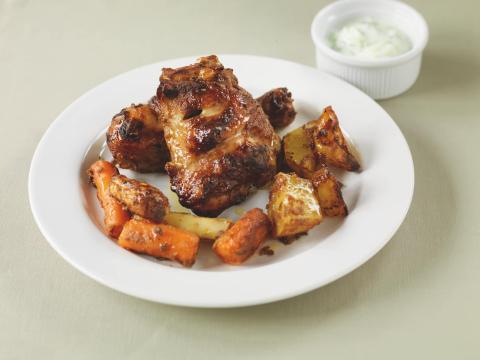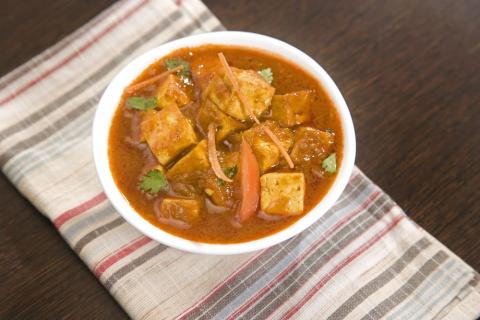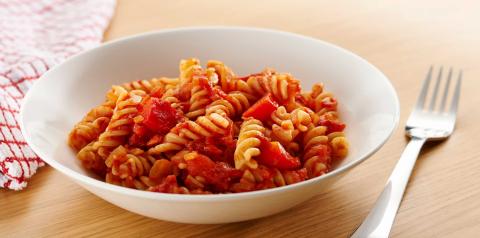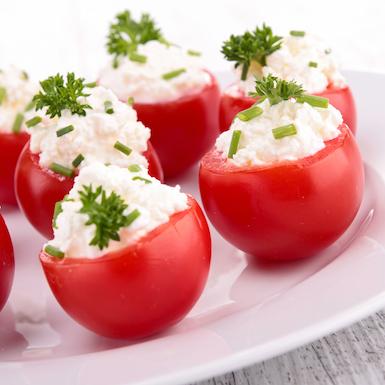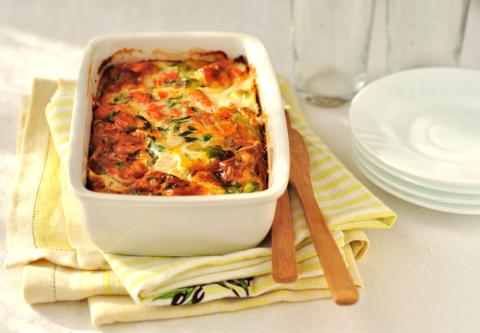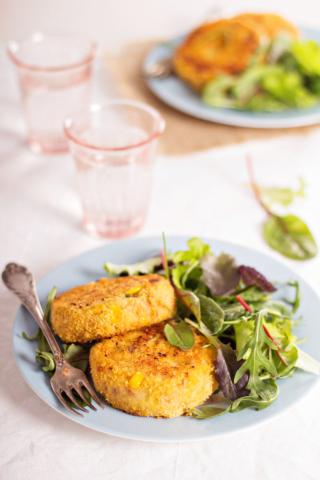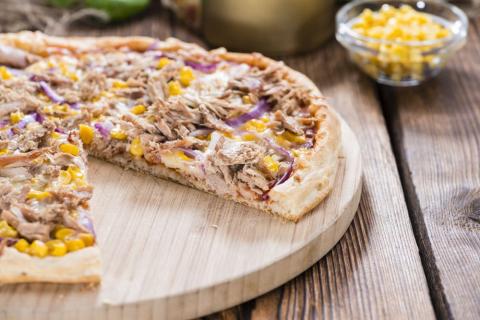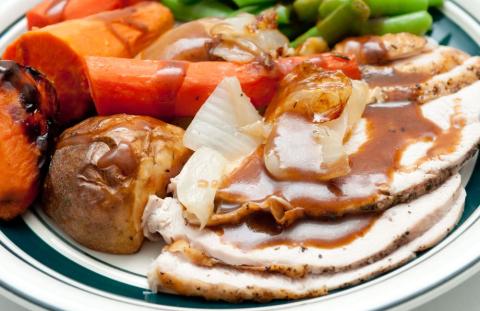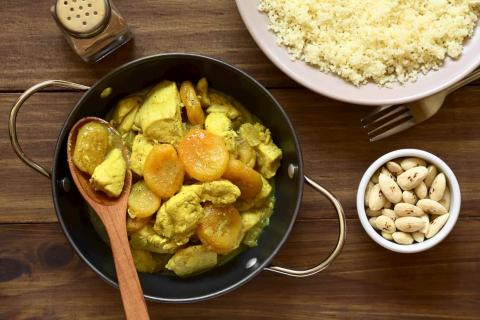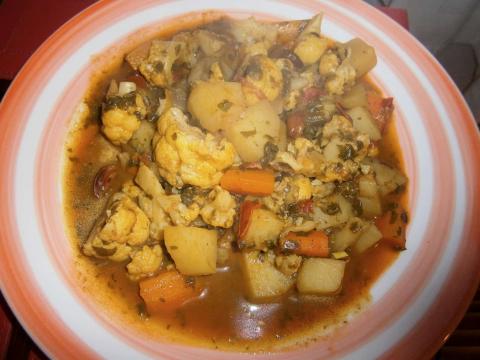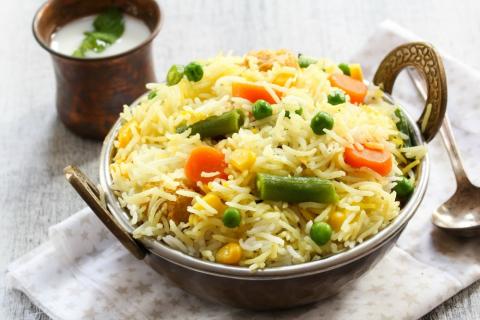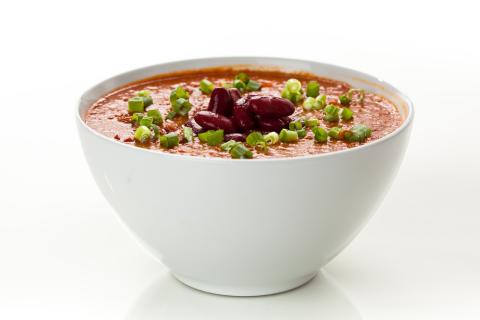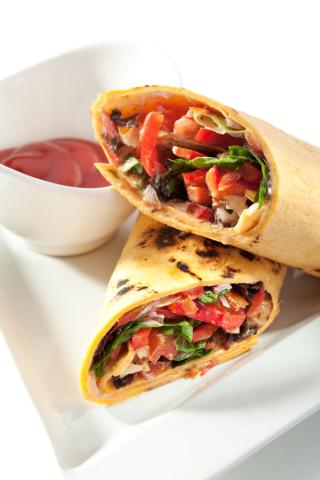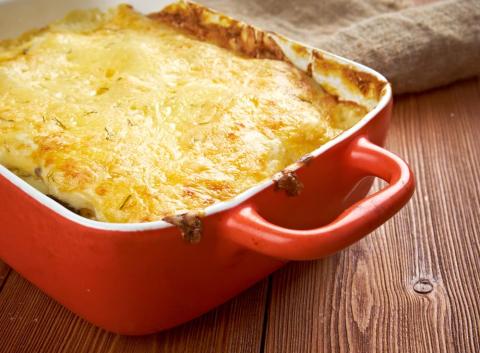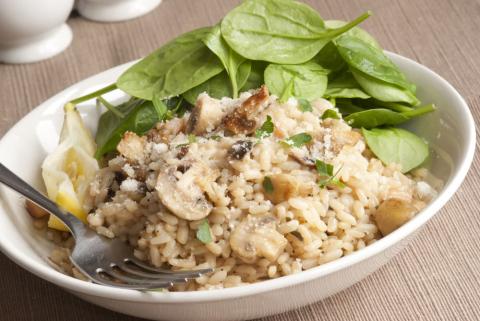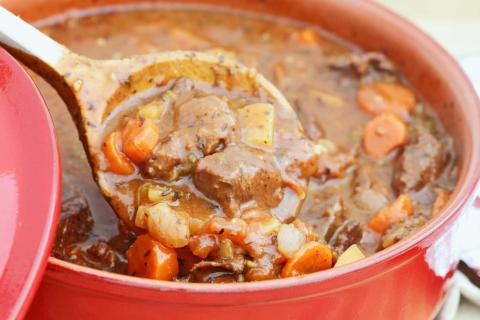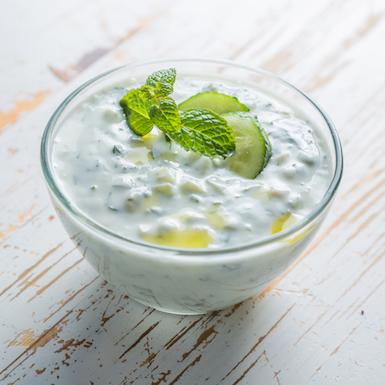- 1 Medium (150g) Onion
- 1 Tin (400g) Chopped or Plum Tomatoes
- 2 Tablespoons (30g) Tomato Puree
- 2 Teaspoons (6g) Chilli Powder
- 1 (160g) Green Pepper
- 1 (160g) Red Pepper
- 6 Medium (60g) Mushrooms
- 1 Medium (100g) Courgette
- 1 Tin (400g) Kidney Beans
- 1 Tablespoon (10g) Vegetable Oil
- 1 Pinch Black Pepper to taste
- 1 Mug (300g) Rice
Ingredients
Allergy Disclaimer
Always check the label of each ingredient for allergy warnings.
Method
- Peel and chop the onions, slice the mushrooms, courgette and peppers. Drain and rinse the kidney beans.
- Heat oil in a pan and add the onion. When the onion starts to turn brown add the mushrooms, courgette and peppers and cook for 5 minutes.
- Add the kidney beans, tomato puree, chopped tomatoes and chilli powder, bring the sauce to the boil, then cover and lower the heat and simmer gently for 5- 10 minutes. If using plum tomatoes, chop them up using a spoon when in the pan. Give it a good stir from time to time.
- Meanwhile boil the rice using the instructions on the packet.
- Add black pepper to taste and serve with rice.
Cost Saver Tips
You could always make double the amount and freeze it for later on in the week. You can try this recipe with different vegetables - it's a good way to use up any leftovers.
Tips for Kids
Chop vegetables into small pieces so they're easier for the kids to eat. (Or, for the fussy eaters around, they're easier to hide!) You could also try using brown rice to up the fibre content.
Nutritional Information
Based on a single serving of 460g (% of an adult's reference intake)
Energy
419 kcals ( 21 %)
1,697 kJ ( 21 %)
Fat
0.5 g ( 3 %)
Saturates
88.6 g ( %)
Sugar
10 g ( 11 %)
Salt
0.1 g ( 2 %)
Detailed nutritional information
| Per 100g | Per 460g serving | |
|---|---|---|
| Energy Kcals | 91 | 419 |
| Energy Kj | 369 | 1,697 |
| Protein | 2.7 g | 12.6 g |
| Total Fat | g | g |
| Saturated Fat | 0.1 g | 0.5 g |
| Carbohydrates | 19.3 g | 88.6 g |
| Total Sugars | 2.2 g | 10 g |
| NSP Fibre | 1.4 g | 6.6 g |
| Sodium | 12 mg | 55 mg |
| Salt | 0 g | 0.1 g |
Find out about nutritional labelling
Nutrition labels on the front of packaging
- Most of the big supermarkets and many food manufacturers display nutritional information on the front of pre-packed food.
- Front of pack nutrition labels provide information on the number of grams of fat, saturated fat, sugars and salt and the amount of energy (in kJ and kcal) in a serving or portion of a recipe.
- The labels also include information about reference intakes (expressed as a percentage) which are guidelines about the approximate amount of particular nutrients and energy required for a healthy diet.
- The colour coding tells you at a glance if the food has high (red), medium (amber) or low (green) amounts of fat, saturated fat, sugars and salt.
- The more greens on the label, the healthier the choice
- Amber means neither high nor low, so you can eat foods with all or mostly ambers on the label most of the time.
- Reds on the label means the food is high in that nutrient and these are the foods we should cut down on. Try to eat these foods less often and in small amounts.
Food shopping tips
If you’re trying to decide which product to choose, check to see if there's a nutrition label on the front of the pack. This will help you to quickly assess how your choices stack up. You will often find a mixture of red, amber and green colour coding for the nutrients. So when you're choosing between similar products, try to go for more greens and ambers and fewer reds if you want to make a healthier choice.
 Activities & Play
Activities & Play Behaviour
Behaviour Childcare
Childcare Development & Growing Up
Development & Growing Up Family, Friends & Relationships
Family, Friends & Relationships Feeding Your Baby
Feeding Your Baby Food & Eating
Food & Eating Health & Safety
Health & Safety Mental Health & Wellbeing
Mental Health & Wellbeing Money & Work
Money & Work Online Behaviour & Safety
Online Behaviour & Safety Pregnancy & First Days
Pregnancy & First Days School & Education
School & Education Sleep
Sleep

